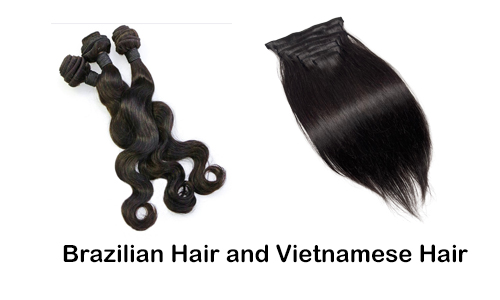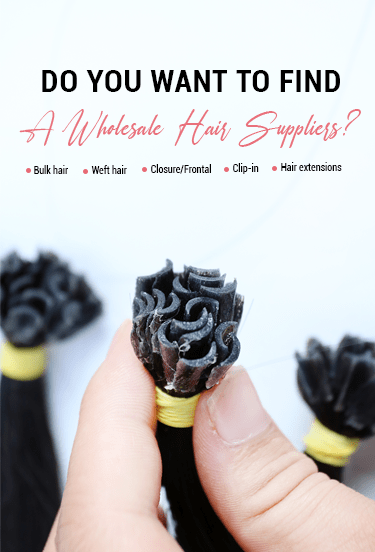
The world of hair extensions has seen a significant rise in popularity over recent years, with many individuals seeking high-quality options to enhance their hairstyles. Among the various types of hair extensions available on the market today, Vietnamese hair and Brazilian hair are two of the most sought-after.
Both types have distinct characteristics that appeal to different preferences and requirements. In this blog post, we will explore the differences between Vietnamese hair and Brazilian hair in detail, covering aspects such as origin, texture, quality, maintenance, and suitability for various hairstyles. By the end of this article, you will have a comprehensive understanding of what sets these two exceptional types of hair apart and how you can choose the one that best fits your needs.
One of the most significant distinctions between Vietnamese hair and Brazilian hair lies in their texture. This section explores the specific textural qualities of each type of hair, helping you understand which might be better suited for your styling needs.
1.1 Vietnamese Hair: Straight and Sleek
Vietnamese hair is renowned for its straight, smooth texture, which makes it an ideal choice for those desiring a sleek, polished look. The natural luster of Vietnamese hair enhances the overall appearance, giving it a vibrant shine. Additionally, because the hair is usually cut without any processing, it maintains its natural strength and resilience, making it less prone to tangling and breakage.
The straight texture of Vietnamese hair lends itself well to various hairstyles, including updos, braids, and layered cuts. Moreover, because it is easy to style and maintain, many people appreciate its versatility. Whether you’re looking to wear your hair down or experiment with intricate styles, Vietnamese hair provides a solid foundation.
1.2 Brazilian Hair: Wavy and Curly Variants
In contrast, Brazilian hair is famous for its diverse range of textures, which includes wavy and curly variations. Brazilian hair often has a natural bounce and volume, making it a popular choice for those who want to add fullness to their hairstyles. The unique texture allows for effortless styling, enabling wearers to achieve beachy waves or defined curls without extensive heat application.
The different textural options provided by Brazilian hair can cater to various styling preferences. If you enjoy experimenting with your look, Brazilian hair offers an array of possibilities — from straightening it for a sleek appearance to enhancing its natural wave for a more casual vibe. This versatility is one of the reasons Brazilian hair remains a favorite among those who enjoy switching up their hairstyles frequently.
1.3 Blending with Natural Hair
When it comes to blending with natural hair, the differences in texture become even more pronounced. Vietnamese hair, with its straight and smooth characteristics, tends to blend seamlessly with other straight hair types. This quality makes it an excellent option for individuals with naturally straight or slightly wavy hair, as it creates a cohesive look.
Conversely, Brazilian hair excels at blending with coarser, textured hair types. Its natural wave and curl patterns make it a fantastic choice for individuals with curly or frizzy hair.
Because of its ability to mimic the natural texture of various hair types, Brazilian hair is often used by those who wish to achieve a more voluminous and textured style while still maintaining a natural appearance.
Quality is one of the most crucial factors to consider when choosing hair extensions. In this section, we compare the quality of Vietnamese hair and Brazilian hair, discussing factors such as durability, processing, and overall performance.
2.1 Durability and Longevity
Vietnamese hair is highly regarded for its durability. Because it is sourced from healthy donors who take great care of their hair, the extensions are often less processed and retain their natural structure. This means they can withstand various styling techniques and daily wear over extended periods without losing their integrity. Many users report that Vietnamese hair can last anywhere from several months to over a year with proper care.
Conversely, Brazilian hair, while also of good quality, may vary more significantly depending on the source and processing methods used. Some Brazilian hair extensions undergo processes that can impact their lifespan, such as chemical treatments or bleaching. While these processes can enhance the hair’s appearance initially, they may lead to increased vulnerability to damage over time. As a result, Brazilian hair may not last as long as Vietnamese hair, but it can still provide satisfactory performance if cared for properly.
2.2 Processing Techniques: Raw vs. Processed Hair
Another important aspect of quality comparison is the processing techniques employed. Vietnamese hair is often sold as “raw” hair, meaning it has not undergone significant chemical treatment or alteration. This raw state helps preserve the hair’s natural properties, making it easier to maintain and style. As a result, users can expect a more authentic look when wearing Vietnamese hair extensions.
Brazilian hair, on the other hand, may come in both raw and processed forms. Processed Brazilian hair can be treated with dyes or chemicals to achieve specific colors or textures. While this processing can provide immediate visual appeal, it can also compromise the hair’s structural integrity. Therefore, it’s essential to understand the level of processing your Brazilian hair extensions have undergone before making a purchase.
2.3 Overall Performance: Styling and Maintenance
Both Vietnamese hair and Brazilian hair can perform well under styling conditions, but users may notice differences in maintenance requirements. Vietnamese hair, due to its durability and lower processing levels, generally requires less frequent conditioning and detangling. This ease of care can be advantageous for individuals with busy lifestyles or those who prefer low-maintenance options.
Brazilian hair, while versatile and beautiful, may require more attention to keep it looking its best. Depending on the texture and processing, Brazilian hair can be prone to frizz, particularly in humid conditions. Users may need to invest in specialized products, such as moisturizing sprays and anti-frizz serums, to maintain the desired look and feel. Understanding these maintenance requirements is essential in making an informed decision that aligns with your lifestyle.
Proper maintenance and care are critical for prolonging the life of hair extensions and ensuring they continue to look their best. This section outlines the care routines for both Vietnamese hair and Brazilian hair, highlighting the best practices for keeping these extensions healthy and beautiful.
3.1 Vietnamese Hair Care Routine
Caring for Vietnamese hair is relatively straightforward, thanks to its natural properties and durability. Here are some essential tips for maintaining Vietnamese hair extensions:
3.2 Brazilian Hair Care Routine
Caring for Brazilian hair extensions requires a bit more attention, especially if the hair has been processed. Here are some best practices to follow:
In summary, both Vietnamese hair and Brazilian hair are exceptional choices in the realm of hair extensions, each with its own unique qualities, textures, and maintenance needs. Vietnamese hair stands out for its durability, natural sheen, and sleek texture, making it a favored option for those with straight or slightly wavy hair. Brazilian hair, known for its versatility and diverse textural options, caters to individuals looking for volume and bounce, especially suited for textured or curly hair types.
Your choice between Vietnamese hair and Brazilian hair ultimately depends on your individual preferences, styling needs, and maintenance capabilities. By understanding the key differences between these two types of hair, you can make an informed decision that aligns with your beauty goals.
As the demand for high-quality hair extensions continues to grow, both Vietnamese hair and Brazilian hair will remain prominent players in the industry, offering a wealth of opportunities for self-expression and beauty enhancement.
Click to to our official website to find more information:
Website: https://messihair.com/
Hotline: +84 923 669 968
Please contact us to have more information!
After more than 10 years since our establishment, we specialize in providing products made from 100% natural human hair to customers around the world such as USA, Nigeria, South Africa, Ghana and Europe countries…
We are proud to be one of the best suppliers in Vietnam when we receive the trust of many customers.
We would like to thank all customers who have trusted us during the past time. Thank you Vietnamese women for helping us fulfill our mission of beautifying women around the world
